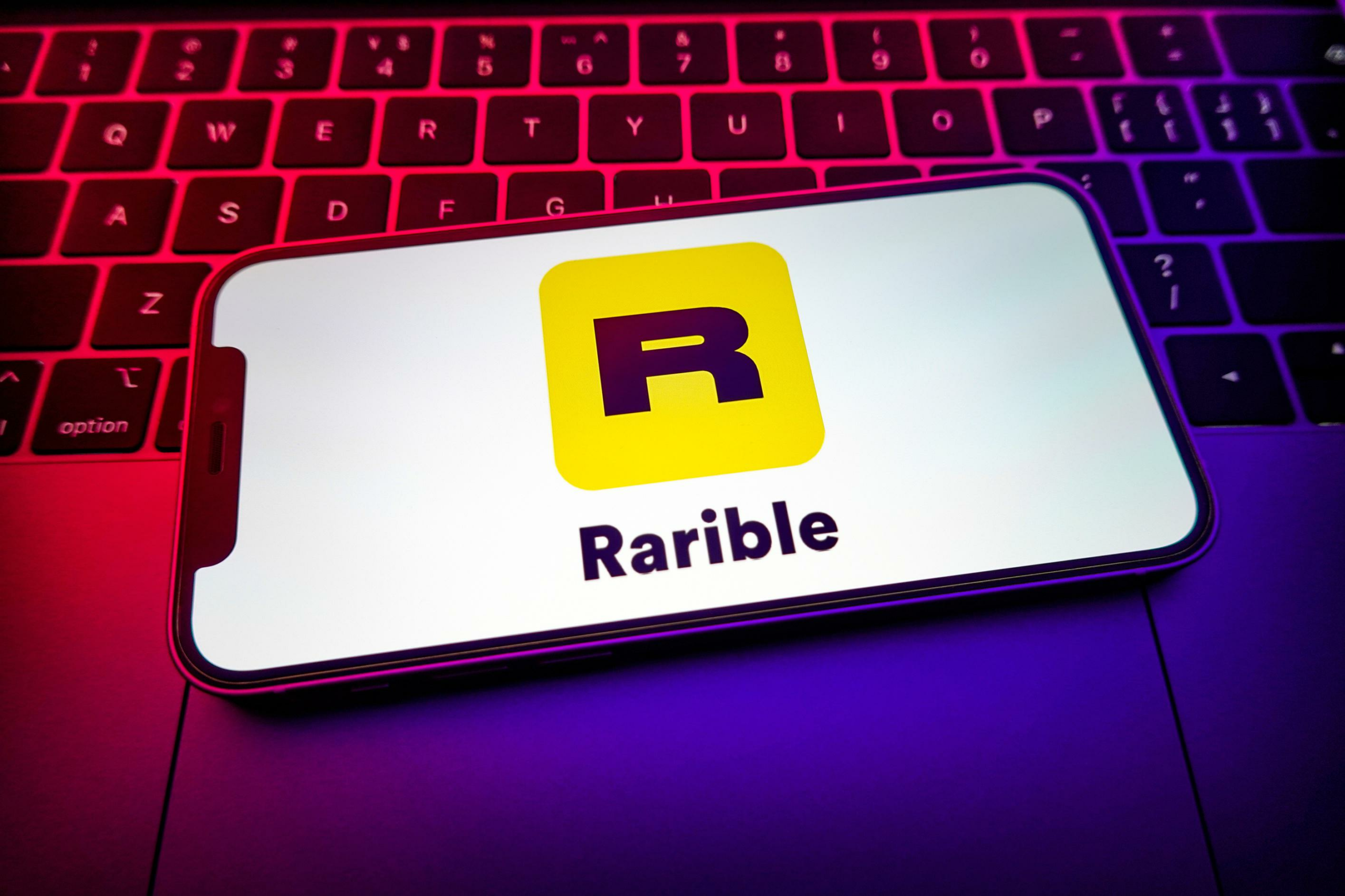Rarible adds aggregated NFT marketplace to combat decreased trading activity.
Rarible’s new aggregated marketplace is the company’s answer to a changing NFT market. The updated website, dubbed Rarible 2, allows users to view items from collections listed on multiple marketplaces on a single page.
Announced as part of a series of updates, Ethereum-based collections of nonfungible tokens (NFTs) listed on centralized and decentralized marketplaces—including OpenSea, LooksRare and SudoSwap—will be listed on Rarible’s website according to price.
“This is how the market works,” says Alexander Salnikov, cofounder and chief strategy officer at Rarible. “Buyers just want to buy something [that is] effective with the best price.”
Rarible, currently the fifth-largest NFT marketplace according to decentralized apps analytics firm DappRadar, has seen a decrease in monthly users since the beginning of the year. Its trading volume over the last 30 days is slightly more than 10% of market leader OpenSea ($323.78 million).
The idea for NFT aggregation largely comes from the company’s desire to bring more collectibles, users and ultimately liquidity to its own platform. The hope, he says, is that by targeting short-term traders with the aggregation, Rarible will see an increase in return users. The aggregation approach makes more sense for Rarible than its four larger rivals largely because it’s big enough to pool the marketplaces together, while still small enough to see a significant benefit from NFTs listed on its platform.
With no additional fees when looking at collectibles on the aggregation platform Salnikov says they will be encouraged them to re-list their NFT onto Rarible instead of their previous marketplace.
“We’re giving users the best window to the market, and at the same time we build a reward that creates a vortex of liquidity to our own order book,” he adds. “It’s like moving listings from other places to our own marketplace.”
Salnikov says the most common type of NFTs traded on aggregators are blue-chip profile picture (pfp) collectibles like Bored Apes, Doodles and Crypto Punks because of their popularity and their liquidity. Though each collectible has unique attributes that determine its price, the dominance and relative price stability of those series has put them in several NFT indexes. Indexes like those of Bitwise and Coinbase track the average price of NFT collections, and are seen as indicators of the state of the market.
Two main customers exist for these types of collections—those looking for a specific NFT with certain desired attributes (many choose those that look like them) and those looking to be part of their communities, simply seeking the best-priced images.
“This is our strategy to capture that market,” Salnikov says of the price-conscious buyers.
Rarible uses tokens for a reward system similar to that of the native tokens of major crypto exchanges. RARI, the marketplace’s native reward token, allows users to bypass a 1% minting fee and gives them voting rights and governance access to the RariDAO, which is also getting an update. The company is introducing a vote-escrowed model, where users who promise to not sell their rewards for a lock-up period will receive extra RARI tokens, effectively granting them more voting power. The longer the lock-up period, up to two years, the more tokens they receive.
“A lot of crypto is derived by very short-sighted decisions,” says Salnikov, adding that traders are incentivized to vote for short-term, high-rewards decisions. “The way to disincentivize that is only to give the ability to vote to people who cannot exit quickly.”
Though the NFT market has largely shifted away from pfps and into gaming, Rarible’s update is the company’s attempt to grow despite headwinds in the NFT market: the aggregated marketplace brings in liquidity, the rewards provide “a gamified experience,” Salnikov says.
While Rarible hosts NFTs minted on various blockchains, including Tezos XTZ and Solana SOL , the aggregated marketplace is currently only available for Ethereum-based NFTs.

